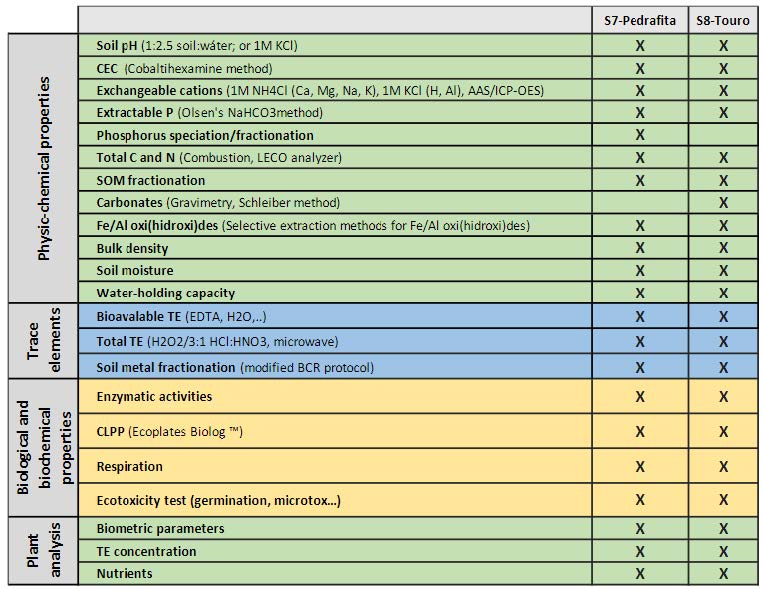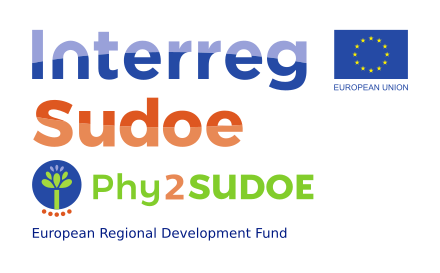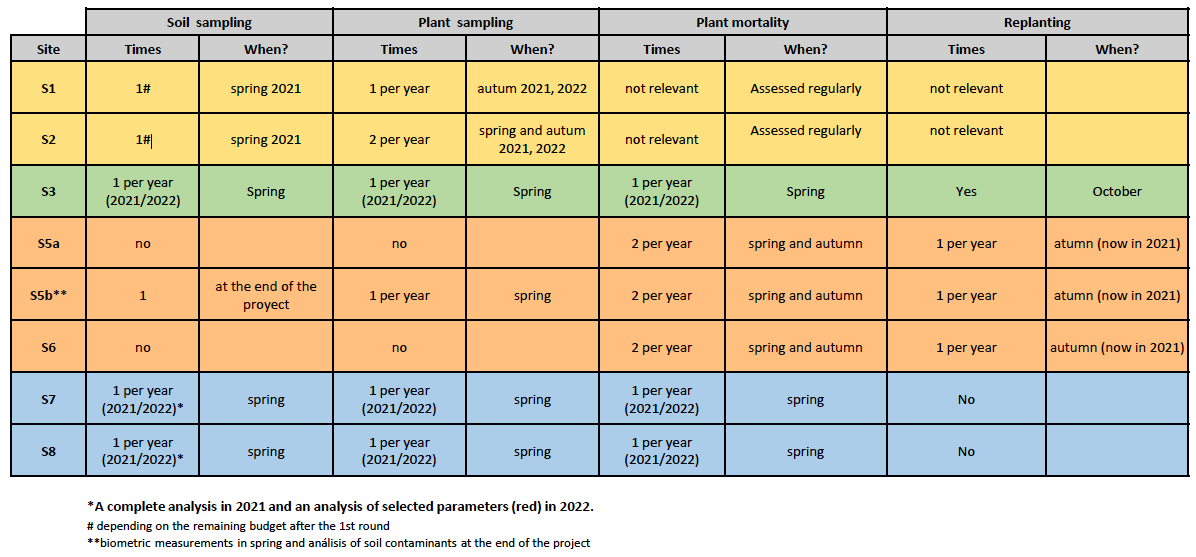09 Jun Progress of GT1
GT1 is the work package aimed at the maintenance of the old PhytoSUDOE project experimental sites and monitoring of the phytomanagement benefits. Its specific objectives are the assessment of the long-term performance of the phytomanagement options; correction of potential deviations of the contamination control; long-term maintenance of phytomanaged areas; design and implementation of protocols; and design and implementation of tools.
Following is a brief overview of works carried out at the sites until December 2021.
S1: St. Médard d’Eyrans
P1- 3 field trial (high yielding crops) crops):
- Cultivation of winter barley and Agropyrum; foliar Si/Se fertilization (x2).
- Analysis of some plants has now been carried out, and in July 2021 the first samples of barley and kernza were collected.
- Monitoring of the Leaf Area Index, maximum shoot length and above-ground biomass of plants (at 3 stages: tillering, stem elongation, and heading).
- Analysis of tobacco shoots (harvested in 2020).
- Soil sampling in June; harvest of shoots/ears in late June.
- With regard to the study of plants, it has been observed that fertilization with silicon and selenium has not affected them, but has had effects on crop concentration, among other findings
PM & PNM field trials:
- Harvest of Amorpha fruticosa; weeding; shoot DW yield.
- Soil sampling in June.
PG trial:
- Weeding (Scoparius).
P1-3 Perennial:
- Harvest of Vetiver (March), fertilization, weeding.
All field trials:
- Imaging of the plots using a multispectral camera and a drone (May 2021).
- Soil sampling in June (soil samples of P1-3 to Neiker).
- Monitoring of field trials.
S2: Parc aux Angéliques / Chaban Delmas
B and F field trials (grassland):
- Experiments are also being carried out with fertilizers including silicon and selenium.
- Increased selenium concentration, and a reduction in cadmium and zinc were also found.
- Monitoring of the Leaf Area Index (3 stages) / foliar Si and Se fertilization vs. compost biochar.
- Wet digestion (March April 21); shoot analysis (samples harvested in 2020, data available) by ICP MS.
- Imaging with a multispectral camera on a drone.
- Soil sampling in June; harvest of shoots in late June.
S3: Borralha
- Only 1-2 plots with poplars (most of the plants with low growth).
- Over 85 % mortality (broken, eaten…) The site will be replanted in October.
- Soils will be collected soon for physical chemical characterization.
- The results of their analysis are expected to be shared in the Network Status Report to be delivered in January 2022.
S5: Ariñez
Monitoring actions:
- Analisys of plant mortality, 2 times/year.
Maintenance actions:
- Weeds clearing, 2 times/year.
- Alfalfa sawing, 2 times/year.
- Watering, 8 times/year (in Summer).
- Replanting, 1 time/year.
- Fence maintenance, each 2 years.
S7: Pedrafita
- Clearing delayed.
- Soil and plant sampling was done in early October 2021, to analyse the survival ratio of the plants, as well as the concentration of chlorophyll in the leaves.
- Trees that were planted in 2017 and inoculated with different types of bacteria were also checked.
- The site was found to be in good condition, as well as the trees planted in that year, with two differentiated study areas:
- One without amendments.
- Another with organic compost amendments.
- The analyses of all the samples have already been started, and the results are expected to be available also for the January report.
S8: Touro
- 18 May: clearing of the plot.
- The vegetation established in 2011 is in good condition.
- The monitoring of the drainage water in the leaching columns continues.
- Plant, soil and water samples were taken in September 2021 and are being studied together with the samples from S7.



